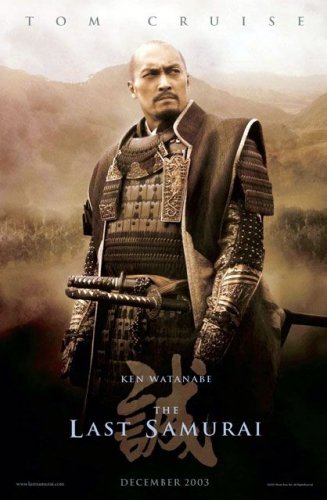They tell me time is relative, which is the only explanation I can conceive of to explain how I managed to go 5 days without writing a journal, and yet it felt like no more than 2… Things have been busy here, but it is the kind of busy that is, for lack of a better phrase, not busy. To elaborate, there are days when you wake up in the morning with nothing planned, anticipating time to do things you would otherwise put off, like vacuuming the floor, or bathing. Yet as the day wears on, one thing after another appears that needs attending to, and before you know it the sun has set and while you’ve been busy all day, you don’t feel as if you’ve accomplished anything.
I have decided that this is what it must feel like to work in an office.
I digress. Today, with 5 associates, I journeyed to the far off city of Oita (10min train ride) to visit what you folks would call a “movie theater.” The talkie that we had chosen to see was none other than Sayuri, which was released nationwide yesterday.
You may know it instead as Memoirs of a Geisha. Before I get into my mini-review, I need to sort something out. Geisha is roughly pronounced “gay-sha” — NOT “gee-sha.” On a related note, sake is pronounced “sa-kay” — NOT “sa-key.”
These are perhaps the two most commonly mispronounced Japanese words in the English language, and it makes my delicate ears burn to hear them bastardized so. Furthermore, if you are at a restaurant and order sake, pronouncing it “sa-key,” you are in fact telling the waitress that you intend to drink a small peninsula. This is at best an embarrassing situation, and at worst blatantly homo-erotic — provided one would like to explore the phallic imagery contained in such a remark…
Back to the movie. Memoirs of a Geisha comes in at just under 2.5 hrs long, which is about 45min longer than my bladder can tolerate after drinking a chai tea latte. It’s been a long time since I had to duck out of a movie to hit the watercloset, and I picked a particularly difficult movie to leave. You see, once you’ve made the judgement call that a trip to the bathroom is required the real game begins: trying to pick the best moment to miss a scene having no foreknowledge of the film. And in a movie as totally engrossing as Memoirs of a Geisha, there simply *are* no best scenes to miss…
At this point I should qualify that statement. Memoirs of a Geisha, taken as a whole, is not in my opinion going to be received as an instant classic – nor should it. It’s a little too Hollywood there, a little too Americanized here, a little too ‘shiny’ in all aspects to become something akin to The King and I or other such Asian-centered epic classics. However, it is still an excellent movie, punctuated by some terrific performances – most notably those of Ken Watanabe and Zhang Ziyi.
If you choose to see the movie, and I think you should, please bear in mind that the principle actors are performing their scenes using a language in which none of them are fluent, much less comfortable using. In light of this, Ken Watanabe’s performance is particularly striking. Those of you who saw Tom Cruise’s The Last Samurai got a small, introductory taste of Watanabe as Katsumoto, for which he received a Best Supporting Actor nomination. Simply put, the man has presence.

There are other actors in the film, Michelle Yeoh makes a memorable performance as Mameha – perhaps the first movie I’ve seen her in where she doesn’t hit, kick, or otherwise chopsocky a single person – but ultimately the movie belongs to Zhang Ziyi’s Sayuri and Ken Watanabe’s Chairman.
As with any Hollywood examination of Asian culture, there are the occasional galling anachronisms – for example, late in the movie Sayuri meets an American for the first time and they have no trouble communicating. It seems Memoirs of a Geisha exists in the same universe as Star Trek, wherein all races, cultures, and creeds have their own personal languages but also mysteriously speak universally understood English.
Ultimately however, one must relax their grip on reality. If you sit back and let this movie works its magic you’ll be carried away into a world that virtually no Westerner, and few Japanese, will ever get to see – that of the Geisha.
Bottom line — whole-heartedly recommended as a gripping saga of pain, betrayal, love, and redemption in early 20th century Japan. Leave your critical eye at the door, and let yourself be swept away... B+
(note — I confess I have not read the book and can offer no critical analysis comparing the two, however, one of my friends has recently read the book and seemed satisfied that the treatment was acceptably faithful…)

